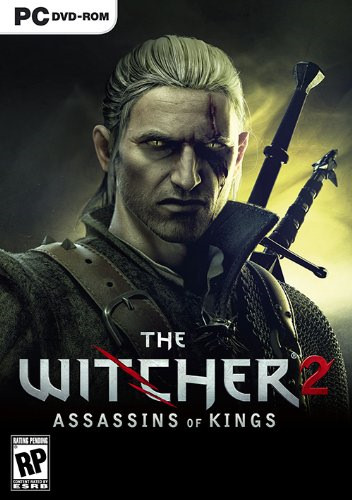The Witcher 2: Assassins of Kings Review
-
Category: ReviewsHits: 36672

Article Index
Page 3 of 6
Combat and Difficulty The combat system of The Witcher 2 is different from its predecessor, but there are certain elements that have remained the same. Like the first game, this title's combat wants you to study monsters before you fight them, to learn what type of attack best to use, and what signs or bombs the monster will be particularly sensitive to. Additionally, timing is key, both in chaining together attacks and in determining when to strike or dodge away.
Otherwise, it's pretty different and more focused on action. The first game had the silver and steel sword and three different stances (strong, fast and group), for a total of six styles you could upgrade and use through the game. In The Witcher 2, you draw either the steel or silver sword and can chain together fast and strong attacks by using the left and right mouse buttons. The group style is gone, which means you can no longer just jump into groups and slash away, as they will mob you to death in no time. Instead, Geralt can dodge around quickly, an essential move that you can use to jump in, chain a few attacks and quickly jump back out. It is vaguely reminiscent of though less reactive than the combat system of Arkham Asylum and similar recent action titles.
There's a healthy variety of enemies which all have a different style of combat to them, as well as different weaknesses and immunities. For instance, harpies are sensitive to be setting alight with the igni sign, while stone gargoyles just shrug it off. Certain faster enemies can only be dealt with by fast strikes, while the insect-like endregas require strong strikes to get through their heavy armor, and others (like wraiths) require smart combinations of both. Knowledge of your enemies is key to defeating them, and trying to just attack without forethought or tactics will usually just get you killed in the early parts of the game.
In general, I prefer this to The Witcher's click-fest of a combat system, but it is less tactical in many ways, replacing much of the need for tactical considerations by depending more on the gamer's reflexes. Also, while what I said about tactics is true in general, the game has a number of strategies and talents that are clearly unbalanced. The worst offender is the magical sign Quen. While they attempted to balance it by making vigor not regenerate while Quen is on, it functions as an invulnerability shield that lasts for a certain time, the timer reduced by enemy damage. When Quen is on, attacks can not be interrupted, and at higher levels of the talent it actually reflects damage back to the attacker, interrupting their attack and knocking them back to make them open to your attacks. It is clearly not the game's intention, but the result is that most fights can be won by judicial use of quen, especially the upgraded version, and if necessary simply rolling around to avoid the enemy when Geralt needs to regenerate vigor.
Quen is the worst offender, but it's not the only one. If you're not specialized in magic, Yrden is probably the second most powerful sign available to you (magic specialists will find uses in the Igni fireballs), as you can trap even the most powerful bosses in an Yrden trap, move around the defenseless enemy and wail on his back for double damage. Other signs, particularly Axii, are much less useful to the point of it just being bad design. Additionally, it is too easy to stockpile potions, oils and bombs, and especially if you have talents to give bonuses to the use of such items, they become too powerful while being fairly cheap to use. Several bosses can be defeated simply by throwing a series of bombs or throwing knives, and the combination of quen and bombs is the perfect cheese tactic against almost every enemy in the game. And finally, while I only tried two of the top powers, the mage's slow-down power is ridiculously overpowered compared to the swordsman's instant-kill power.
This lack of balance is a major part of The Witcher 2's difficulty curve. Because contrary to first impressions, this is not a difficult game, at all. Yet the first time I played it I kept getting beaten up in the prologue and Act I, before coasting on through the final two acts. There's two reasons for this: One, The Witcher 2 does have a reverse difficulty curve, much like the Gothic games, meaning it's more difficult at the start as you have fewer skills and inferior equipment and gets easier as you progress. This is unusual in cRPGs, but I'm a big fan of it since it really makes you experience your character's progress. Two, the game does a terrible job teaching you how it's supposed to be played. The prologue acts as a tutorial of sorts but given the complexities of the combat system its short pop-up screens are simply inadequate, at best just telling you how the interface works rather than how combat works. Much of the difficulty of the early game stems from not knowing what you're doing, and this is not a fun way to be challenged. The lack of a proper tutorial or gameplay instructions is probably the game's biggest flaws, and inflates the difficulty artificially. On my second playthrough, I had the game on Hard all throughout, but my understanding of the system (and its imbalances) meant I could breeze through almost every fight. One exception is when the game executes one of its gimmicky "play like someone else" sequences, most of which aren't hard, but Geralt's skills are used to determine the character's skill as a swordsman, which makes no narrative sense and is very annoying for non-swordsman builds.


